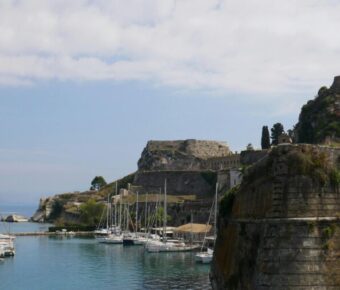
Vienna vs Prague: Which Historic Capital Offers Better Value in 2025?
Prague and Vienna captivate visitors with their stunning architecture, rich history, and vibrant cultural scenes. These two Central European gems sit just 4 hours apart by train, making them perfect destinations to combine in one trip.
Prague offers better value for money and livelier nightlife, while Vienna excels in museums, classical music, and organized infrastructure. Both cities charm travelers with grand palaces, ornate churches, and centuries of royal heritage.
A visit to either city promises unforgettable experiences exploring medieval streets, sipping coffee in historic cafes, and discovering local traditions. Most travelers spend 2-5 days in Vienna and 2-7 days in Prague to fully appreciate their unique attractions and atmosphere.
Contents
- Historical Significance and Modern Vibe
- Vienna’s Imperial Past
- Prague’s Bohemian Spirit
- Contemporary Appeal
- Cultural Highlights and Exploration
- Museum and Gallery Tours
- Live Performance Venues
- Architectural Wonders
- Gastronomic Journey
- Local Cuisine Favorites
- Dining Scenes
- Market and Street Food
- Leisure and Entertainment
- Shopping and Markets
- Parks and Nature
- Nightlife and Bars
- Hidden Gems and Unique Spots
- Accommodation and Transportation
- Hotels and Stays
- City Navigation
- Seasonal Considerations and Events
- Weather and Best Time to Visit
- Festivals and Annual Celebrations
- Practical Travel Considerations
- Budgeting for Your Trip
- Safety and Accessibility
- Traveler Types and Preferences
- Frequently Asked Questions
- What are the key differences in nightlife between Vienna and Prague?
- How do the costs of visiting Vienna compare to those in Prague?
- Can you compare the experience of visiting Vienna and Prague in December?
- Which city should be preferred for spending Christmas: Prague or Vienna?
- Which has more to offer in terms of cultural experiences: Vienna or Prague?
- How do the sizes and the overall feel of Vienna and Prague compare for tourists?
- More Travel Guides
Historical Significance and Modern Vibe
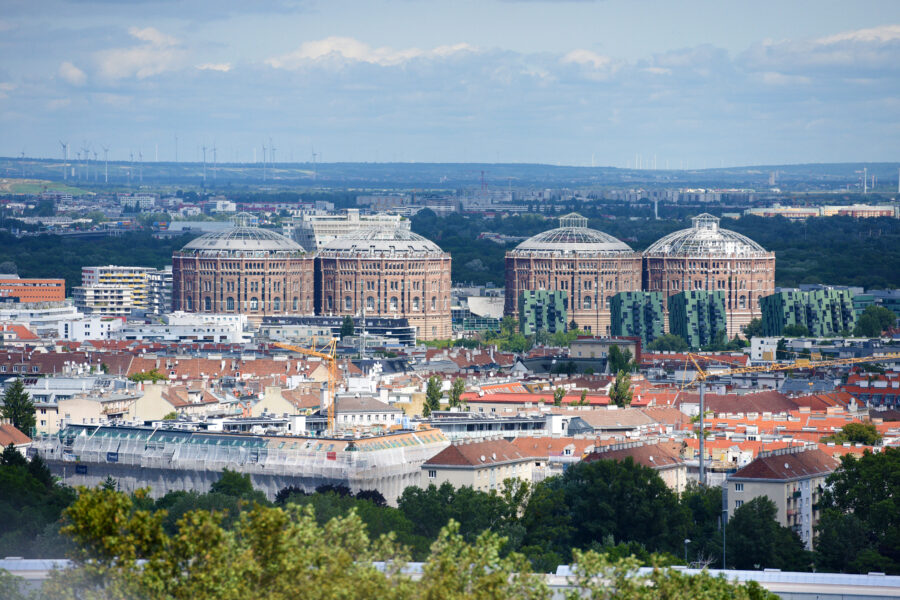
Both Prague and Vienna showcase remarkable blends of history and modern life. Each city maintains its distinct character while embracing contemporary culture. Their rich pasts and vibrant present offer unique experiences for visitors.
Vienna’s Imperial Past
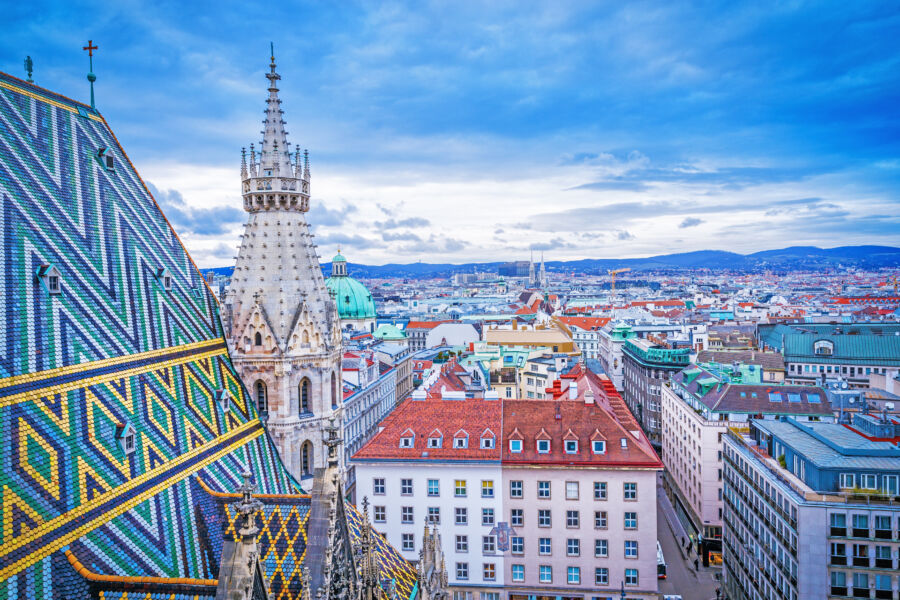
The grandeur of Vienna’s Habsburg Dynasty lives on through its magnificent imperial palaces. The Hofburg Palace stands as the heart of imperial power, where visitors can walk the same halls as emperors and empresses once did. Its stunning baroque architecture tells stories of royal ceremonies and political intrigue.
The city’s royal heritage extends beyond the palaces. Grand boulevards lined with opera houses and museums reflect Vienna’s status as a former imperial capital. Elegant coffee houses serve as living museums where writers and artists still gather.
The streets buzz with classical music heritage. Concert halls host world-class performances, keeping Vienna’s musical tradition alive.
Prague’s Bohemian Spirit

Prague’s medieval charm shines through its Old Town Square, where the famous Astronomical Clock has marked time for over 600 years. Narrow cobblestone streets wind through the historic center, creating a fairytale atmosphere unique to this Bohemian capital.
Prague Castle watches over the city from its hilltop perch. It’s the largest ancient castle complex in the world, and its churches and palaces mix Gothic, Renaissance, and Baroque styles.
The Jewish Quarter preserves important stories of Prague’s past. Its synagogues and cemetery serve as powerful reminders of the city’s Jewish heritage.
Contemporary Appeal

Prague’s Zizkov district pulses with alternative culture and buzzing nightlife. Young artists and musicians fill its quirky bars and galleries with creative energy.
Vienna balances tradition with innovation. Modern art museums stand next to historic palaces, and the MuseumsQuartier brings contemporary culture to life in former imperial stables.
Both cities embrace cafe culture in different ways. Prague’s cozy pubs serve craft beers, while Vienna’s sleek coffee shops offer fresh takes on classic traditions.
Street art and design shops add modern flair to ancient neighborhoods in both capitals, and new restaurants and galleries transform historic buildings into exciting cultural spaces.
Cultural Highlights and Exploration
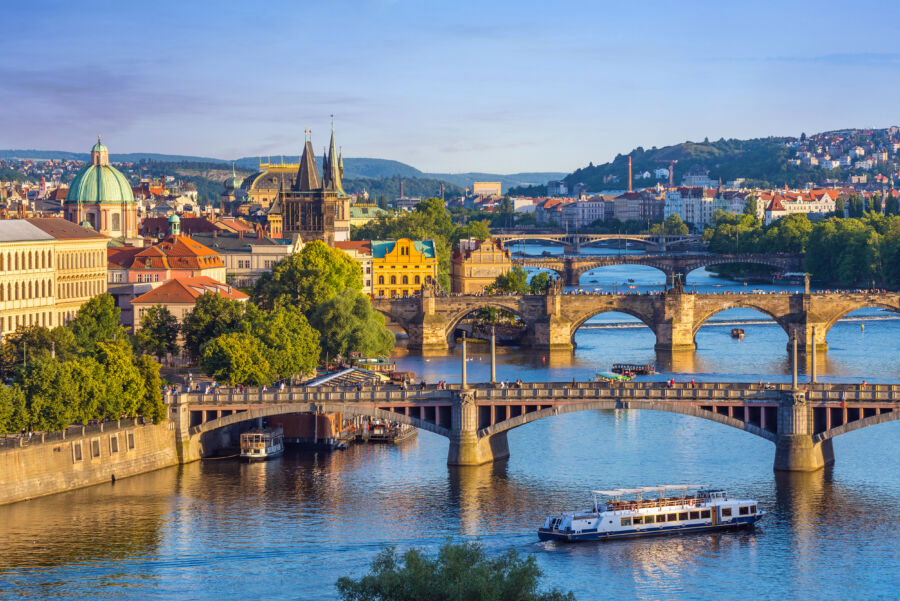
Both Prague and Vienna shine as cultural powerhouses, offering visitors world-class museums, stunning performance venues, and breathtaking architecture that spans centuries. The artistic legacy of these cities lives on through their carefully preserved cultural institutions and magnificent buildings.
Museum and Gallery Tours

The Kunsthistorisches Museum in Vienna stands as one of Europe’s finest art museums, housing an impressive collection of Old Masters and the world’s largest Bruegel collection. The MuseumsQuartier transforms former imperial stables into a modern cultural complex with multiple museums and galleries.
Prague’s National Museum showcases millions of items related to natural history, the arts, and culture. The city’s Jewish Museum complex spans several historic synagogues and offers deep insights into Jewish heritage.
Art lovers can book guided museum tours to make the most of these vast collections.
Live Performance Venues

The Vienna State Opera represents the pinnacle of classical music performance, hosting over 350 shows yearly in its Neo-Renaissance building. The Musikverein, home to the Vienna Philharmonic, provides perfect acoustics for classical concerts.
Prague’s National Theater presents opera, ballet, and drama in a stunning Neo-Renaissance setting. The Rudolfinum serves as home to the Czech Philharmonic and offers exceptional classical music programs.
Both cities maintain active street performance scenes, with musicians and artists bringing culture to public spaces.
Architectural Wonders

Vienna’s Belvedere Palace complex showcases Baroque architecture at its finest. It features beautiful gardens and houses famous artworks like Klimt’s “The Kiss.” The Ringstrasse boulevard displays a remarkable collection of 19th-century buildings.
Prague’s Charles Bridge connects two architectural gems: the Old Town and Lesser Town. The bridge features 30 baroque statues and offers amazing views of the Prague Castle.
Gothic spires dot Prague’s skyline, while Vienna’s architecture, with its Hofburg Palace complex, leans toward imperial grandeur.
Plan your architectural tours to see these magnificent structures with expert guides.
See Related: Munich vs Vienna: Stunning Differences Between These Historic European Capitals for Travelers
Gastronomic Journey

Both Vienna and Prague offer mouthwatering food scenes that blend traditional recipes with modern cooking. Each city brings its own special flavors and dining experiences to the table.
Local Cuisine Favorites

Vienna’s most famous dish is the crispy Wiener Schnitzel, a breaded veal cutlet served with potato salad or parsley potatoes. The city’s sweet tooth is also evident in its legendary Sachertorte, a rich chocolate cake with apricot jam.
Prague’s hearty cuisine includes tender beef goulash with bread dumplings. The city’s pork knuckle is fall-off-the-bone tender and comes with mustard and horseradish.
Both cities take pride in their beer culture. Prague’s pilsners are world-famous, while Vienna offers unique lagers and wheat beers.
Dining Scenes

Vienna’s elegant coffee houses serve as cultural institutions. Places like Café Central and Café Sacher mix history with fancy pastries and perfect coffee.
Prague’s restaurants tend to be more casual and budget-friendly. Many spots offer cozy cellar dining rooms with brick walls and wooden beams.
Fine dining exists in both cities. Vienna leads with 13 Michelin-starred restaurants compared to Prague’s two, but Prague makes up for it with creative bistros and wine bars.
Market and Street Food

Prague’s street food scene centers around Trdelník – sweet pastry rolls coated in sugar and nuts. Local markets like Havelská offer fresh produce and quick bites.
Vienna’s Naschmarkt is a food lover’s dream with over 100 stalls. Vendors sell fresh produce, spices, and ready-made dishes from many cultures.
Street sausage stands called Würstelstände dot Vienna’s streets. They serve hot dogs and käsekrainer (cheese-filled sausages) late into the night.
Food trucks are gaining popularity in both cities, bringing new flavors to traditional spaces.
Leisure and Entertainment

Vienna and Prague offer vastly different leisure scenes. Vienna brings elegance with fancy cafes and classical music, while Prague draws people in with its lively beer gardens and medieval charm.
Shopping and Markets

Vienna’s shopping scene centers on the glamorous Naschmarkt, a massive outdoor market filled with fresh produce, local treats, and vintage finds. The city’s Golden Quarter sparkles with designer boutiques like Chanel and Louis Vuitton.
Prague’s shopping is more down-to-earth. The Palladium mall brings modern retail therapy, but the real treasures hide in the Old Town’s winding streets. Local craft shops sell Bohemian crystal, wooden toys, and handmade jewelry.
Both cities have great Christmas markets in winter. Prague’s markets in Old Town Square feel magical with wooden stalls selling hot wine and traditional ornaments.
Parks and Nature

Vienna’s Prater park stands out with its famous Ferris wheel and amusement rides. The Schönbrunn Palace gardens offer peaceful walks past fountains and flower beds.
Prague’s green spaces have a wilder feel. Petrin Hill rewards hikers with amazing city views and a mini Eiffel Tower. The Vltava River paths make perfect spots for afternoon strolls or bike rides.
The vineyards around Vienna’s edges let visitors taste local wines with city views. Prague’s Letna Park beer garden mixes nature with Czech beer culture.
Nightlife and Bars

Prague wins at nightlife hands down. The city comes alive after dark with endless pubs serving cheap Czech beer. The Zizkov district alone has hundreds of bars within a few blocks.
Vienna’s nightlife feels more refined. Think wine bars, cocktail lounges, and jazz clubs. The MuseumsQuartier area draws young crowds to its trendy outdoor spaces.
Dance clubs in Prague stay open until sunrise. U Sudu bar spreads through medieval cellars, while Cross Club’s weird metal decorations create a unique party spot.
Hidden Gems and Unique Spots

Vienna’s hidden spots lie in its quiet courtyards and secret passages. The Sigmund Freud Museum and tiny Third Man Museum tell fascinating stories away from tourist crowds.
Prague keeps secrets in its Lesser Town back streets. The John Lennon Wall changes daily with new art. Kafka’s old house sits quietly in the Jewish Quarter.
Strange sculptures by David Cerny pop up around Prague. Look for the hanging man or the giant crawling babies. Vienna’s street art scene lives in the colorful Spittelberg quarter.
See Related: Best Places to Visit in Austria: Your Ultimate Travel Guide
Accommodation and Transportation
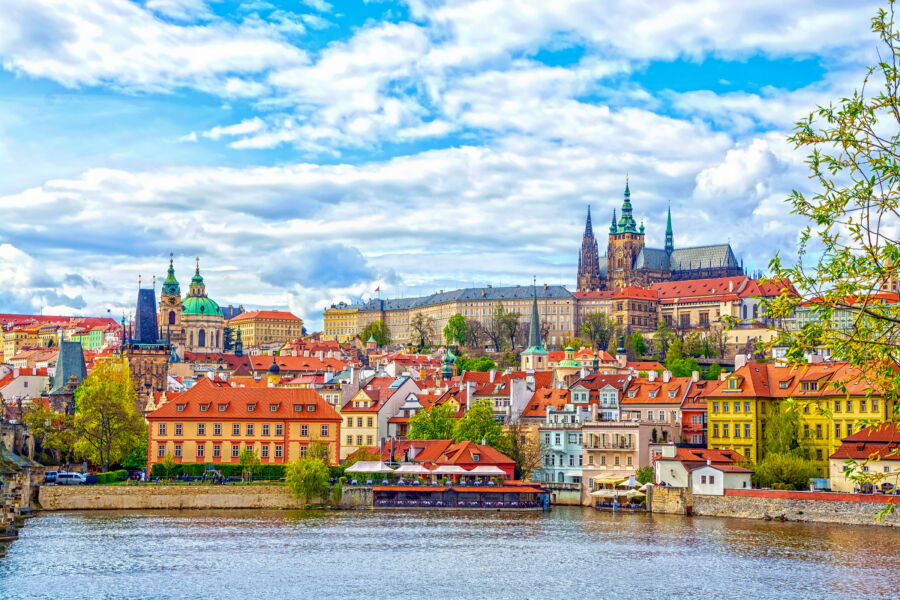
Both Prague and Vienna offer excellent places to stay and ways to get around, with Prague being more budget-friendly while Vienna leans toward luxury options. The cities’ modern transit systems make exploring simple and stress-free.
Hotels and Stays
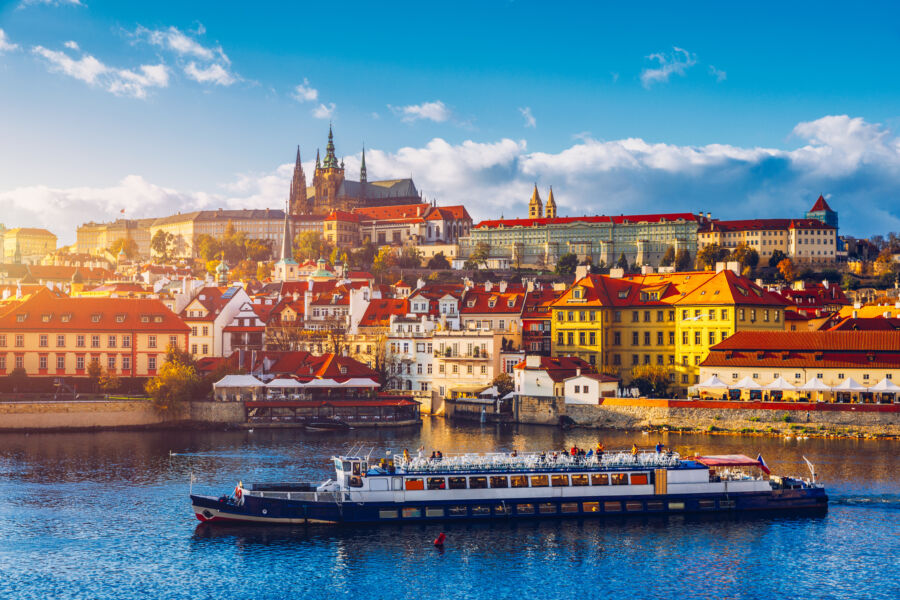
Prague provides many affordable accommodation choices on Booking.com. Budget hotels in Prague’s city center start around €50 per night, with luxury options reaching €200+. The Mala Strana district stands out as an ideal spot for tourists, putting major sights within walking distance.
Vienna’s hotels tend to cost 30-40% more than Prague’s. A basic room in Vienna starts at €80, while high-end hotels can exceed €300 nightly. The area near the Opera House attracts many visitors due to its central location.
Both cities cater well to different types of travelers. Backpackers find plenty of hostels in Prague, while Vienna excels in upscale boutique hotels and grand historic properties.

The Prague Metro system includes 3 lines covering most tourist areas. Single tickets cost about €1.20, making it one of Europe’s most affordable subway systems.
Vienna’s U-Bahn network features 5 lines and connects seamlessly with trams and buses. A single ticket costs around €2.40.
Both cities offer 24-hour, 48-hour, and 72-hour transit passes. Taxis run on meters in both places, though Prague’s fares cost roughly half of Vienna’s rates.
Walking proves easy in both city centers. Prague’s historic areas cluster closer together, while Vienna’s attractions spread out more, making public transport more necessary.
Seasonal Considerations and Events
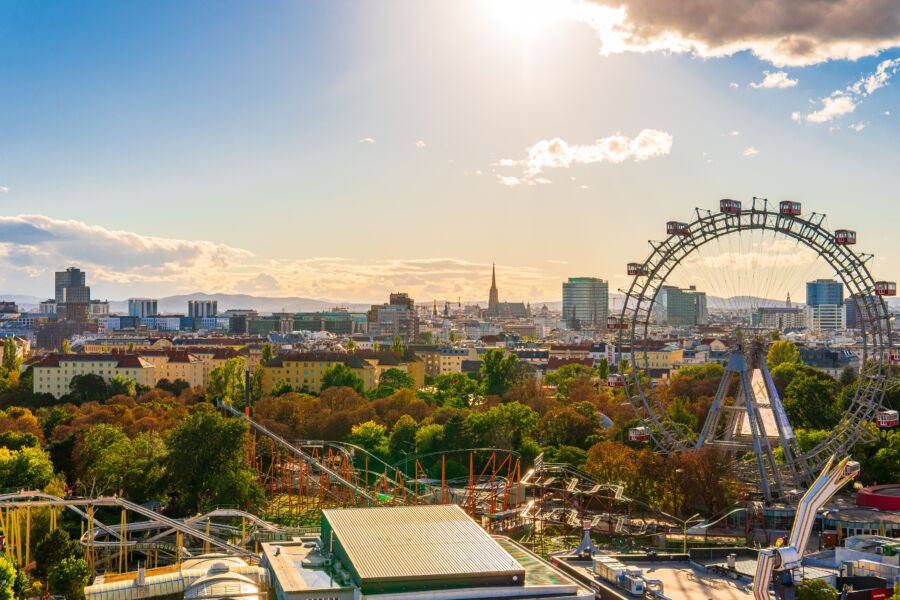
Both cities experience distinct seasons that shape their cultural calendars. The weather patterns and festive events create unique atmospheres throughout the year, making certain times more appealing for specific types of travelers.
Weather and Best Time to Visit
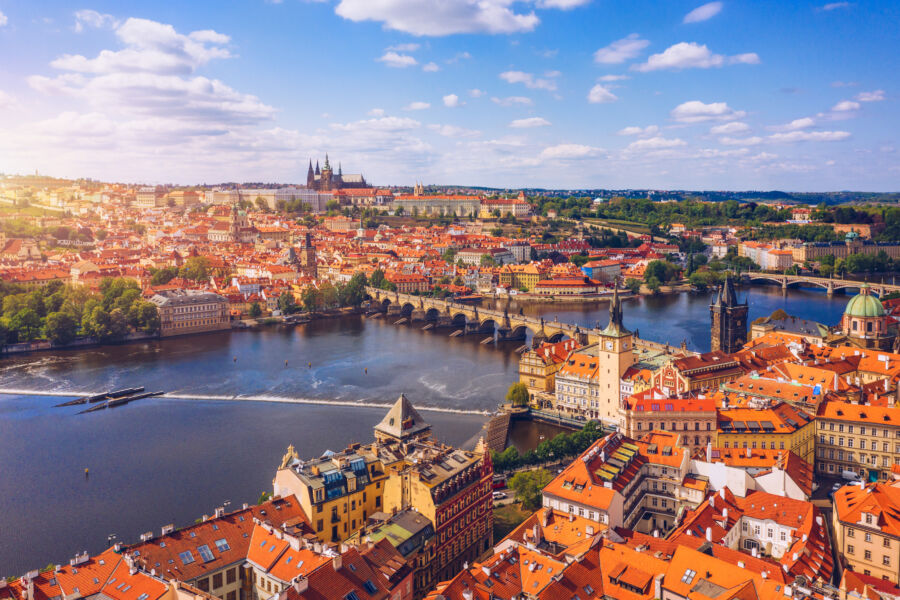
In both cities, spring brings mild temperatures. April and May offer comfortable walking weather and fewer crowds. Temps range from 15-20°C (59-68°F).
Summer gets quite warm. Vienna hits 25-30°C (77-86°F) and Prague is slightly cooler. July and August see the most tourists and higher hotel prices.
Fall is lovely in both cities. September and October bring colorful foliage and pleasant temperatures around 15-20°C (59-68°F), perfect for outdoor cafes.
Winter gets cold, dropping to -2°C (28°F) or lower. Snow is common between December and February. Pack warm clothes and expect shorter daylight hours.
Festivals and Annual Celebrations

Vienna’s ball season lights up January and February with elegant formal dances in historic palaces. The most famous is the Opera Ball.
Prague’s Spring Music Festival, which runs from May to June, draws classical music fans. The city is filled with concerts in churches and concert halls.
Both cities shine during the Christmas market season. Vienna’s markets start mid-November, with the largest at Rathausplatz. Prague’s Old Town Square market runs through December.
Summer brings outdoor wine gardens (Heurige) to Vienna. Prague hosts food festivals and beer gardens along the Vltava River.
Fall features harvest festivals and wine celebrations in both cities. The Prague Wine Festival in September lets visitors sample Czech and Moravian wines.
Practical Travel Considerations
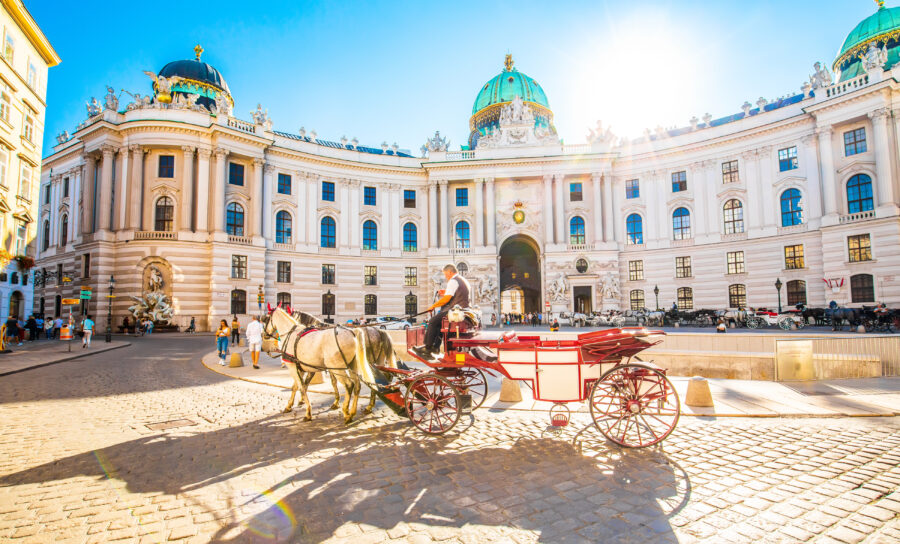
Both Prague and Vienna offer unique experiences for different types of travelers, with distinct costs, safety profiles, and accessibility features that can make or break your trip.
Budgeting for Your Trip

Prague tends to be cheaper than Vienna for most travel expenses. A mid-range hotel in Prague costs around $80-120 per night, while similar accommodations in Vienna run $120-180.
The Czech koruna gives tourists more buying power than the euro used in Vienna. A typical meal in Prague costs $8-15, compared to $15-25 in Vienna.
Public transport in Prague is very affordable at about $1.50 per ride. Vienna’s transport costs around $2.40 per trip but offers excellent coverage.
Tourist attractions show a similar pattern. Prague Castle entry is roughly $12, while Schönbrunn Palace in Vienna charges about $20 for basic entry.
Safety and Accessibility

Both cities rank among Europe’s safest destinations. Prague and Vienna have low crime rates and reliable emergency services.
Prague’s historic center has cobblestone streets that can be tricky for those with mobility issues. Vienna offers more modern infrastructure, smoother sidewalks, and better wheelchair access.
Public transport in both cities is clean and well-maintained. Vienna’s system includes more elevators and ramps at stations.
Both cities are very walkable. Most major sites in Prague’s Old Town are within 20 minutes of each other on foot.
Traveler Types and Preferences

Solo travelers feel at home in both cities. Prague’s hostels and walking tours make it easy to meet people, while Vienna’s cafes and museums are perfect for independent exploration.
Families with kids might prefer Vienna’s interactive museums and sprawling parks. The Prater amusement park is a huge hit with children.
Backpackers often choose Prague for its cheaper hostels and lively pub culture. A bed in a good hostel costs $15-25 per night.
Couples find romance in both cities. Prague offers cozy riverside restaurants, while Vienna excels with elegant ballrooms and classical concerts.
See Related: Prague vs Vienna: Which Central European Gem Offers the Best City Break?
Frequently Asked Questions

These two historic European capitals offer distinct experiences in terms of nightlife, costs, seasonal events, and cultural attractions. Each city has its own unique charm and character that appeals to different types of travelers.
What are the key differences in nightlife between Vienna and Prague?
Prague’s nightlife is more casual and energetic. Many beer gardens and pubs are spread across districts like Žižkov and Vinohrady. The city comes alive after dark with street musicians and bustling beer halls.
Vienna’s nightlife tends to be more sophisticated. It features wine bars, jazz clubs, and classical music venues. The traditional coffee houses stay open late and offer a refined atmosphere for evening socializing.
How do the costs of visiting Vienna compare to those in Prague?
Prague tends to be 20-30% cheaper for most tourist expenses than Vienna. Hotels, restaurants, and attractions in Prague often cost less than similar options in Vienna.
Food and drinks in Prague are notably cheaper, especially local beer, which can cost half as much as in Vienna. Public transport in both cities is reasonably priced.
Can you compare the experience of visiting Vienna and Prague in December?
Prague gets quite cold in December, with temperatures often below freezing. However, the city feels magical, with snow-covered rooftops and Christmas markets in Old Town Square and Wenceslas Square.
Vienna transforms into a winter wonderland with elegant Christmas decorations and markets at Schönbrunn Palace and Rathausplatz. The coffee houses become cozy refuges from the cold weather.
Which city should be preferred for spending Christmas: Prague or Vienna?
Vienna excels at Christmas celebrations with its grand markets and classical concerts in historic venues. The city’s imperial buildings look stunning when lit up for the holidays.
Prague offers a more intimate Christmas experience with medieval charm. The Christmas markets feel less commercial and more traditional than Vienna’s.
Which has more to offer in terms of cultural experiences: Vienna or Prague?
Vienna stands out for classical music, opera, and art museums. The city hosts world-class performances at venues like the State Opera House and Musikverein.
Prague shines in Gothic architecture and folk traditions. The city’s medieval astronomical clock, Jewish Quarter, and puppet theaters provide unique cultural experiences.
How do the sizes and the overall feel of Vienna and Prague compare for tourists?
Prague’s historic center is compact and walkable, making exploring major sites on foot easy. The medieval layout creates an intimate atmosphere perfect for wandering.
Vienna feels more spread out with its grand boulevards and imperial scale. The city has excellent public transport to connect its various districts and attractions.

